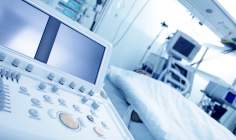
The European medical software market may seem like fertile ground for lease companies, but a detailed understanding of individual markets is essential to success. Paul Golden reports.
The report Medical Equipment Rental and Leasing: A Global Strategic Business Report published in March estimated that the global market for medical equipment rental and leasing will reach $63bn by 2020, driven by increasing budget constraints and escalating cost of new equipment. The US and Europe account for the majority of sales.
European medical technology industry associations’ alliance MedTech Europe observes that medical technology is characterised by a constant flow of innovations, which are the result of a high level of research and development within the industry and of close co-operation with users. Products typically have a lifecycle of only 18-24 months before an improved product becomes available.
There are around 25,000 medical technology companies in Europe, with small and medium-sized companies making up almost 95% of the industry, the majority of which employ fewer than 50 people. The European medical technology market is estimated to be worth 100bn.
In 2012, more than 10,000 patent applications were filed with the European Patent Office (EPO) in the field of medical technology – equivalent to 7% of the total number of applications and more than any other technical field. Almost 40% of these patent applications were filed from European countries.
But the market is not without its challenges. The severity of the financial constraints placed on medical institutions was highlighted by Jurgen Schulze, president of the European Diagnostic Manufacturers Association at the European MedTech Forum.
How well do you really know your competitors?
Access the most comprehensive Company Profiles on the market, powered by GlobalData. Save hours of research. Gain competitive edge.

Thank you!
Your download email will arrive shortly
Not ready to buy yet? Download a free sample
We are confident about the unique quality of our Company Profiles. However, we want you to make the most beneficial decision for your business, so we offer a free sample that you can download by submitting the below form
By GlobalDataIn Europe, an average of 10.4% of gross domestic product is spent on healthcare. Of this figure, around 7.5% is attributed to medical technologies, although the exact amount varies significantly across European countries.
Forum attendees heard how as a consequence of budget cuts, medical professionals with whom the medical technology industry has cultivated strong, long lasting relationships have seen their roles as financial decision makers forced to take a back seat, with payers’ and patients’ concerns taking priority. Payers in particular have become more demanding as a result of tighter budgets, wishing to be shown exactly what it is they are getting for their money before parting with it.
A white paper published by technology platforms and solutions provider PTC (Software Development for Medical Devices – Overcoming the Challenges of Compliance, Quality and Cost) observes that software is fast becoming the differentiator for manufacturers of medical devices and that balancing the risks and challenges of regulation, stringent quality requirements, market pressures and significant complexity requires tailored application lifecycle management tools that address the unique needs of medical devices companies.
In addition, each European market has its own unique characteristics: in some countries, budgeting and reimbursement decisions are made by regional authorities while in others these are made at national level. Certain countries have separate systems for reimbursement for hospital and community care sectors and the amount paid for services might differ even within a country. It is challenging to navigate this complex system and medical technology companies need to know both the decision-making process and how to engage with key stakeholders.
MedTech Europe is currently partnering with several stakeholders, particularly payers, to set up a platform for an open dialogue on funding and reimbursement.
The European healthcare industry is expanding rapidly, with the number of hospitals, clinics and diagnostic centres increasing across the continent and presenting a strong business case for the sale of new medical equipment according to William Brazis, senior vice president & healthcare technology director at CSI Leasing.
"The growing number of patients seeking diagnostic and therapeutic care has resulted in increased wear and tear on medical devices, thus shortening the replacement cycle," he explains. "The pressure of cutting healthcare costs – along with growing complexity in healthcare provision – is rendering existing medical devices obsolete. Technological advancements focusing on costs and efficiency will drive the European medical equipment market in 2016."
Brazis says both cash-strapped healthcare facilities and resource-rich, large scale medical enterprises are opting for leasing solutions due to the lower total cost of ownership and the relative ease of securing a lease agreement compared to acquiring bank financing. "Through equipment leasing, healthcare institutions can avoid locking-in capital into new equipment purchases and improve the return on investment," he adds.
Peter Blonk, head of medical imaging at Canon Europe refers to positive trends in both software and hardware leasing among European hospitals and healthcare facilities and expects demand for medical equipment and software to grow over the next few years.
"With hardware leasing, so-called ‘technology contracts’ offer hardware at a certain technology level for a fixed monthly fee, offering hospitals an injection of capital as well as clarity in monthly costs. Potential downsides can include vendor lock-ins where substantial switching costs can occur if the customer wants to move to another supplier. Software-as-a-service is a more common element in software deals, although privacy and performance issues still hinder widespread adoption."
When asked whether European hospitals and healthcare facilities look for flexible financing agreements that enable them to update technology regularly, Blonk observes that the market is divided.
"The aforementioned technology contracts promise hospitals more updated technology," he says. "But in practise this can sometimes be a disappointment. It also seems that hospitals are unwilling to pay a premium for further updates and instead opt for cost reducing implementations."
Thorsten Arp, general manager of Philips Medical Capital Europe (a joint venture between SGEF and Philips Medical) says healthcare providers are increasingly discussing directly with medical suppliers service models for the usage of medical devices and dedicated software solutions.
"In the different markets we observe that especially hospitals and hospital chains are investigating partnership models with medical suppliers to share related risks in the operating of medical equipment over a long term solution up to 15 years," he explains. "The different stakeholders in such structures are concentrating on their core activities – hospitals on diagnostics and therapy of their patients and medical suppliers on the delivery, installation, financing and maintenance of the related medical devices."
Arp observes that the market for medical software leasing has gone through significant changes in recent years and is still in a state of flux. In the past, healthcare providers were interested in having ownership of medical equipment due to the fact that the equipment was used for the long term and normally also beyond its normal economic lifetime. This behaviour was steered by dedicated healthcare reimbursement mechanisms among other factors.
"Healthcare providers are now more interested in realising their investments by using tailor-made lease solutions," he continues. "If we talk about offering hospitals a real ‘full service solution’, the flexibility in the contract terms and conditions is key. In this context an innovation clause can be included to renew the existing full service contract if there is a new technology development available – especially in large scale projects based on partnerships between healthcare providers, medical suppliers and lease companies, innovation clauses are part of the entire concept."
In relation to the Dutch market specifically, Pim van Lexmond, senior relationship manager public sector for ABN AMRO Lease observes that where in the past software licensing was only offered by suppliers who provided financing of licences via lease, other parties are now entering that market.
"Until recently, Dutch hospitals more often acquired financing from their suppliers instead of leasing companies, although those leasing companies may have acted as undisclosed funders for the suppliers," he says. "Since their banks are reducing their credit lines, hospitals are looking for alternatives."
Van Lexmond explains that many hospitals in the Netherlands are in the process of buying new information technology, such as electronic patient files. "This requires a large investment which is often spread out over a period of 2-4 years. A large part of the investment is consultancy and implementation costs, which cannot be financed by lease since it is not an asset. Software licences can be financed via lease."
Acquiring functionality instead of a piece of equipment is a new trend within healthcare, he continues. "For some hospitals, ‘state of the art’ equipment is key, whereas for other hospitals it is not. Suppliers offer managed equipment services contracts by means of long term contract, which offers possibilities to get the latest equipment as soon as it becomes available, replacing a piece that is maybe only a couple of years old and might suit another hospital better. Additionally, the major suppliers of medical equipment are keen on getting equipment back for refurbishment – giving equipment a second life is not only profitable for the supplier but also for the environment."
Van Lexmond expects growth in demand for medical equipment software leading in the Netherlands, but acknowledges that it is difficult to predict exact rates of expansion.
"The Dutch healthcare market has been very turbulent, with many mergers taking place and others in progress," he explains. "During the period in which two hospitals are working towards a merger, investments in new equipment are reduced. Either they are not necessary any more, or are postponed."
Non-traditional players such as 3D printing companies are occupying specific niches in the market with 3D printed prosthetic parts, surgical 3D models and implants being increasingly used in hospitals, dental offices and clinics, notes Adrian Oprica, medical market manager at BNP Paribas Leasing Solutions.
"On the other hand, the economic weakness in the Eurozone, budgetary constraints and austerity measures hinder investments in medical equipment, mostly in southern Europe," he says. "The most affected segment is diagnostic imaging, which is very capital intensive."
Another market concern is related to the ongoing revision of the medical device regulatory framework in the EU. A proposal to amend the European Council directives on medical devices has been put forward by the European Commission and depending on its final outcome the revision may extend the list of medical devices which require validation by a ‘notified body’, thus creating additional costs for manufacturers.
Traditionally, European hospitals have not been keen on upgrading equipment until the end of its life cycle. According to Oprica, this behaviour is now changing on account of ever more rapid technological advancement.
"An increasingly common way to ensure regular technology updates is through managed services contracts that include a financing component," he says. "The managed services provider delivers a turn- key medical set-up and manages the non-clinical operations, while the hospital pays the cost of the hardware and services over the life of the contracts."
Some arrangements may include a cost per procedure, which is convenient for hospitals as they receive government funding depending on the type and volume of procedures performed. This type of consumption-based model with financing arrangement embedded in a pay-per-use pricing follows the same trend as in other technology markets which are shifting to an ‘asset-as-a-service’ approach.
Due to overall economic weakness and budgetary constraints, Oprica expects slow growth for medical equipment in Europe at around 3% per annum, much below the expected global growth rate of the industry.
"Some countries will perform better than others," he says. "We believe that the UK will grow at the fastest rate as a result of the government’s commitment to increase NHS spending in England in real terms by a minimum of £8bn over the next five years. With its economy in a better shape, Germany will also grow faster than the average. At the other end, we expect Italy and Spain to maintain very low growth prospects due to budgetary constraints."
NHS Supply Chain offers operating and finance lease arrangements across a wide range of equipment areas through a nationally negotiated framework agreement.
Budgetary constraints – coupled with rising prices of medical equipment – are clearly driving the European medical equipment leasing market. Oprica expects annual growth rates (6%) for lease activity to outpace growth in the wider medical equipment market.
"For this reason, we consider the medical segment as one of our main growth areas in the technology equipment space," he concludes.






